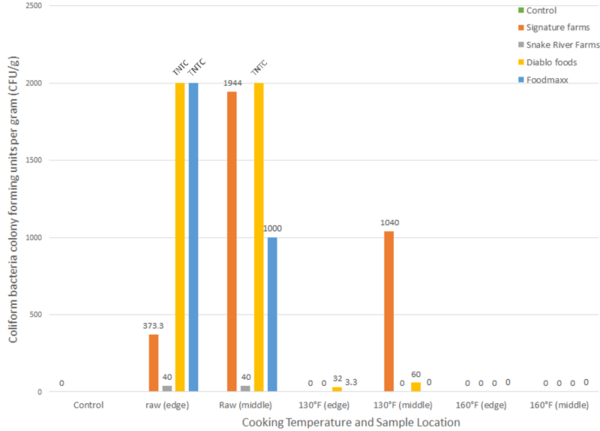Quantifying coliform bacteria in ground beef to evaluate food safety guidelines
(1) Acalanes High School
* These authors made equal contributions
https://doi.org/10.59720/23-051
Ground beef, while common in the American diet, can cause many bacterial-related illnesses, including Escherichia coli infection and death, when eaten undercooked. The Centers for Disease Control and Prevention (CDC) recommends cooking ground beef to well-done, 160°F, to prevent foodborne illness. However, only around 46% of American adults prefer their burgers well-done or medium-well, so many Americans are at risk. We tested ground beef samples to determine whether the CDC’s recommendations are necessary, or merely a precaution, by quantifying the amount of coliform bacteria, an indicator organism that is correlated to individual species of disease-causing bacteria. Additionally, we tested if lower ground beef prices were an indicator of higher coliform contamination. We hypothesized that rare beef would have more coliform bacteria than well-done, and that more expensive beef would have less coliform bacteria. We prepared four brands of ground beef at three temperatures (raw, 130°F, 160°F). We homogenized samples with PBS, centrifuged the samples, and dispensed the supernatant onto film plates which simultaneously detect E. coli and coliforms after 24 hours of incubation. We counted colonies, and calculated colony forming units (CFUs) per gram of beef used to prepare the supernatant. We did not find any conclusive relationship between the meat price and the quantity of coliform bacteria. However, all raw samples contained coliform bacteria colonies, and half of the medium-rare samples (130°F) contained at least one coliform bacteria sample. No samples cooked to 160°F grew coliform bacteria or E. coli. Thus, the CDC’s guidelines for should be followed to avoid foodborne illness exposure from ground beef.
This article has been tagged with: